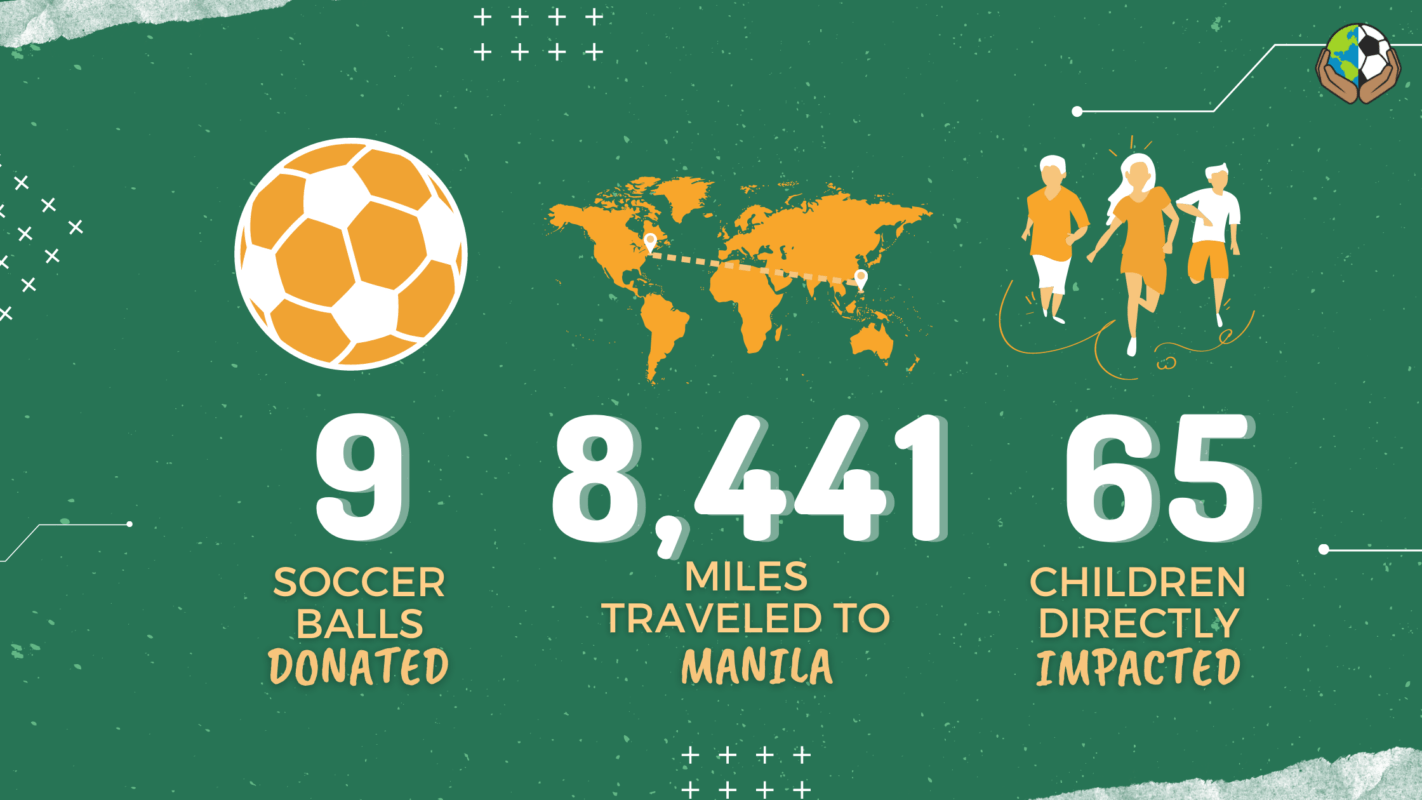Baguio City, Philippines (Part 2)
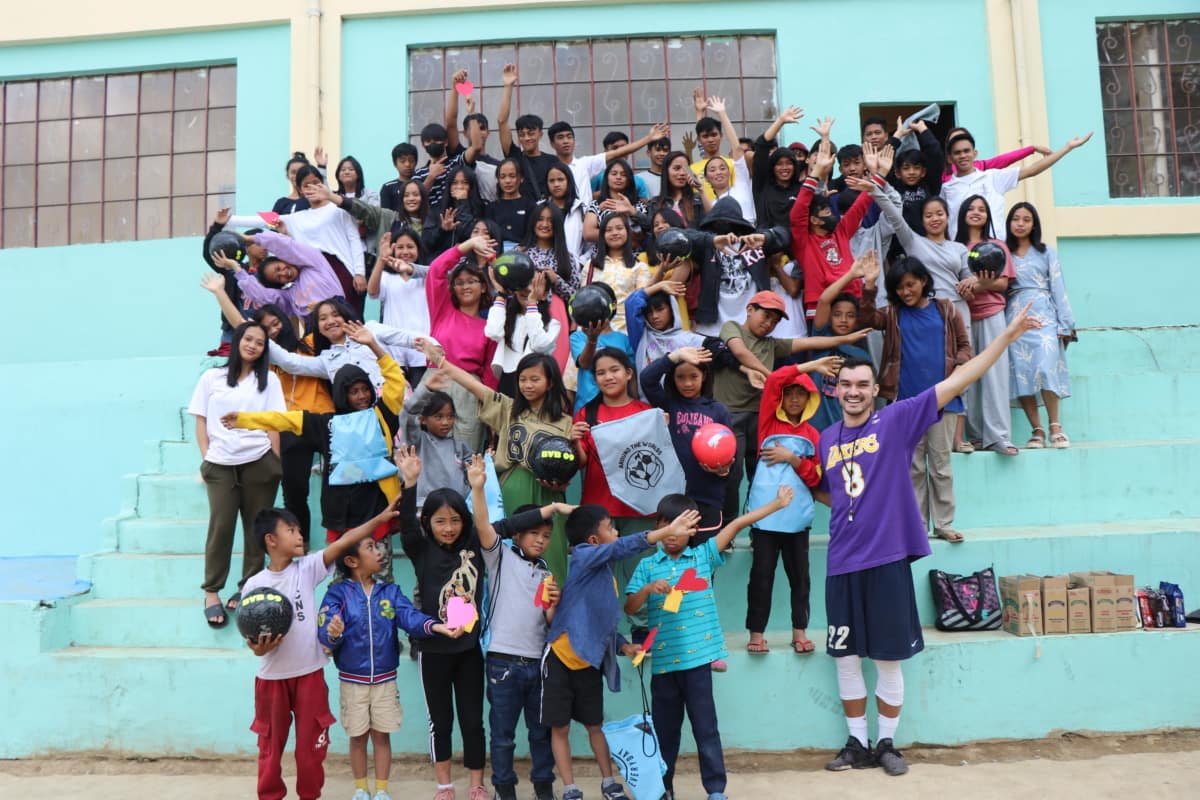
In January of 2016, I made a trip to the Philippines to visit family. During that time, Around the Worlds was still a thought and a pipe-dream more than anything else. I held a few sessions before that trip, but they were sporadic and not consistent. The inaugural program was in August 2015 and I held a second session in Texas. Looking back on those days, I didn’t really know what I was doing. There was no curriculum. There was no organization, nor a plan and schedule. Programs were basically all English-speaking, and funding and resources were incredibly hard to come by.
With all that said though, that trip to the Philippines would end up being incredibly important and formative in the organization’s coming of age story. It wasn’t the catalyst or anything, but it certainly affirmed that I was doing what I was meant to do and it ultimately pushed me to formalize Around the Worlds as an organization and subsequently as a 501(c)3 nonprofit.
Earlier in that trip, I ran a session in the lowlands at a high school my Lola (grandma) had attended many years ago. Later, we had one of our biggest ever collaborations with a Nobel Peace Prize nominated organization based in Zambales. All of this happened before Around the Worlds was even an organization. I still look back on those days fondly despite knowing just how much has changed and what was to come.
One of the last sessions during that experimental Philippines-based programming run was at a children’s home just outside of my mother’s hometown – Baguio City. Bethesda Children’s Home, located in Tuding, Itogon, Benguet, served as a refuge for children without parents and children from other serious situations. Complete with dormitories, a school, a church, and more, Bethesda was a safe haven for kids to grow spiritually, physically, and mentally. That’s exactly what it was until it wasn’t.
Three days before visiting the compound, there was a freak accident. An electrical fire destroyed the children’s dormitories and the church. The tragedy was still so fresh at the time that jeepneys could be seen pulling in and out of the complex, still clearing burnt debris and rubble from down below. It was a heavy day, one that still brings about its share of emotions in its own way. The only thing left from the church was a cross shaped t-beam, standing upright like a beacon of hope as smoke continually rose from behind it, even days after the fire.
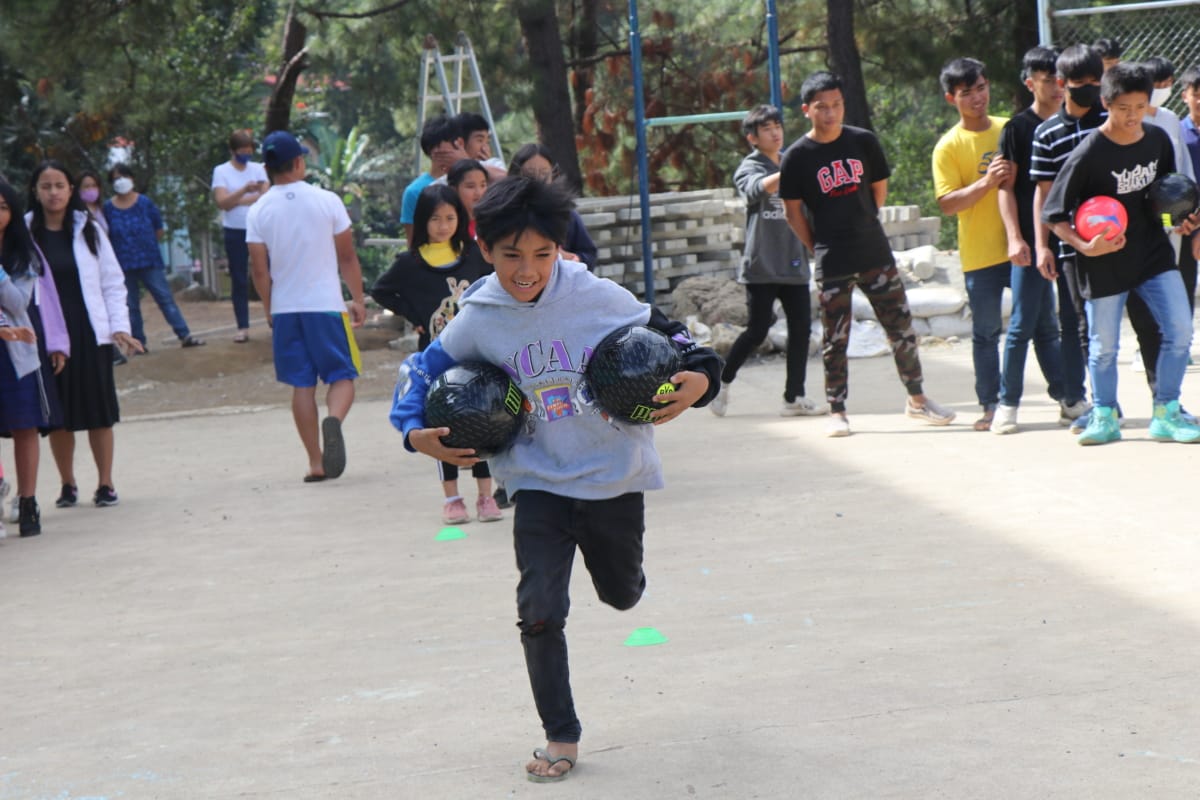
Before the program began, two girls sang a duet for us, the lyrics of their chosen song piercing the heart and tugging at its strings. Perhaps, the true weight of those lyrics was unknown to them. But to those careful enough to listen, the words were timely, poignant, and dare I say, perfect.
“The pain that you’ve been feeling, can’t compare to the joy that’s coming,” the two girls sang in unison.
I remember a tear dripping down my face, one quickly wiped away as I had to place all my concentration on running a program in a language I did not speak with kids who had, for all intents and purposes, just experienced the worst. There’s no doubt in my mind that the joy those girls sang of was present that day. It shined as bright as they did. On that day and in that place, joy was not a feeling, but rather a state of being. It was a sign of a brighter day, a shared trust in the chance for a better tomorrow. Like that cross-shaped t-beam emerging from the ashes, the kids stood there resolute and resilient. In the face of tragedy, they chose joy and with it came hope.
Fast forward to January 2023, almost exactly seven years removed from that one session, I found myself yet again in the Philippines in my mother’s hometown. I’d been struggling with where the organization was going next and hadn’t done a great job setting up sessions, but I was determined to get back to Bethesda. It’d been years since I was anywhere close to Baguio. We made a couple phone calls, dotted a couple i’s and crossed a couple t’s, and then it was settled. We planned to hold an afternoon session at Bethesda on January 15, from 1:30-2:30 PM.
I won’t lie, the equipment available to me was lighter than normal. I had about 16 drawstring bags and only eight balls. Even with our supplemental giveaways, custom Around the Worlds bracelets, we were running thin. I counted about 25 of those, but still, Bethesda drew a large crowd last time and was sure to feature nearly the same this time around. I talked to Andrea, our contact and a housemother at Bethesda, and she said 70 kids would be in attendance. That was a bit of an overwhelming number, so we reduced it to 30-40 participants.
We piled into the car along with the eight already-inflated balls and began the trip to Bethesda. It was only five kilometers away from our home in Baguio, so we didn’t need a super early start or anything, although I always like to arrive early. We traveled lower and lower, from the high altitude of Baguio down towards Benguet. Streets began to look more familiar, as did their shape and steepness. We slowly descended down winding streets, pulling into Bethesda’s gate for a quick greeting by Andrea and the ministry’s director.
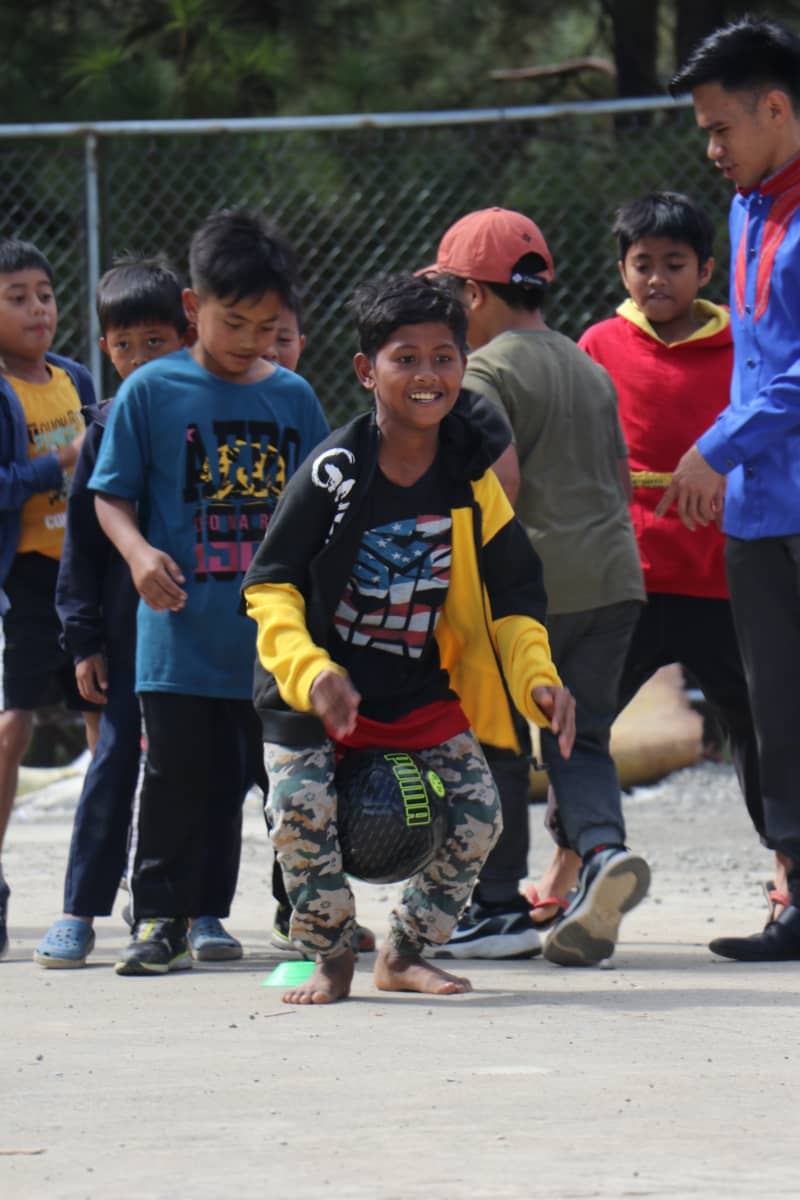
Right after, we made our way to the school and its outdoor basketball court, complete with bright blue bleachers that aside from their color hadn’t changed at all in the past seven years. The familiarity of it all brought about some much-needed comfort. To the left of the court, a short metal fence wrapped around, protecting any balls from their certain death down into the never-ending abyss on that side of the mountain. This, too, was familiar, as we had lost a couple casualties back in 2016 as well. At that moment, I caught my pops’ eyes and they told a sad song.
“We lost one already,” he mouthed. Luckily, the moment though in itself sad was brief as the kids managed to retrieve the ball from the literal pits. I looked to my right and was welcomed by the sight of a couple dozen kids, maybe about 40 if I had to guess. They sat there quietly and patiently, waiting for the day’s activity to commence.
An older volunteer passed me a microphone plugged into a loudspeaker and asked me to kick things off. Similar to the week prior in Manila, I started off nervously and honestly, poorly, in terms of Tagalog-proficiency.
“Magandang hapon lahat sa inyo!” (Good afternoon to all of you!) I said, still very much catching my bearings with the microphone.
“Ako si Stephen (I’m Stephen). Isang football trainer sa states (a soccer trainer from the United States). Masaya na masaya nako maging dito kasi we had a football program nearly seven years ago in this exact same place. (I’m very happy to be here now because…)” I finished, having exhausted most of my Tagalog already.
From there, I passed the mic off to my mother for a couple remarks. The kids learn and study in English, so honestly I was playing with house money even just attempting to run the session in Tagalog. Most of them appreciated it, though I definitely heard their laughs throughout the program. Introductions out of the way, it was time to kick things off. We only had an hour blocked off for the session and the kids had spent the first 10 minutes singing us some new songs coupled with their own choreographed dance numbers, so I was eager to maximize the rest of our time together. Remember how many kids I said I had planned for? 35, right? 40 at most? Well, I had turned away and that 40 became 50. Then, I blinked, and 50 became 65.
The kids just kept flooding in from every which direction, from the dormitories, from the school, and more. Some were dressed up, the older girls wore light makeup, the boys had their sportswear on, but everyone and I mean everyone was wearing a smile – a smile that would only grow wider and more prominent as the program played out. I looked at my already-made grid, one that two older boys had generously helped me set up. Sixteen cones made the grid up, atop of those cones sat eight balls.
I shook my head. This is not gonna be easy I thought. I called over to my contact, Andrea, “Excuse me? Are there any extra sports balls here? Like a basketball, etc. that we can use just as a placeholder for the soccer balls I did not have on me?”
She told me no, regrettably, informing me that of course there were some basketballs, but they were locked away in the school for a weekend. I did some quick math and decided the most I would be capable of controlling in this game was about 50 kids, which even then posed a slight safety issue in itself.
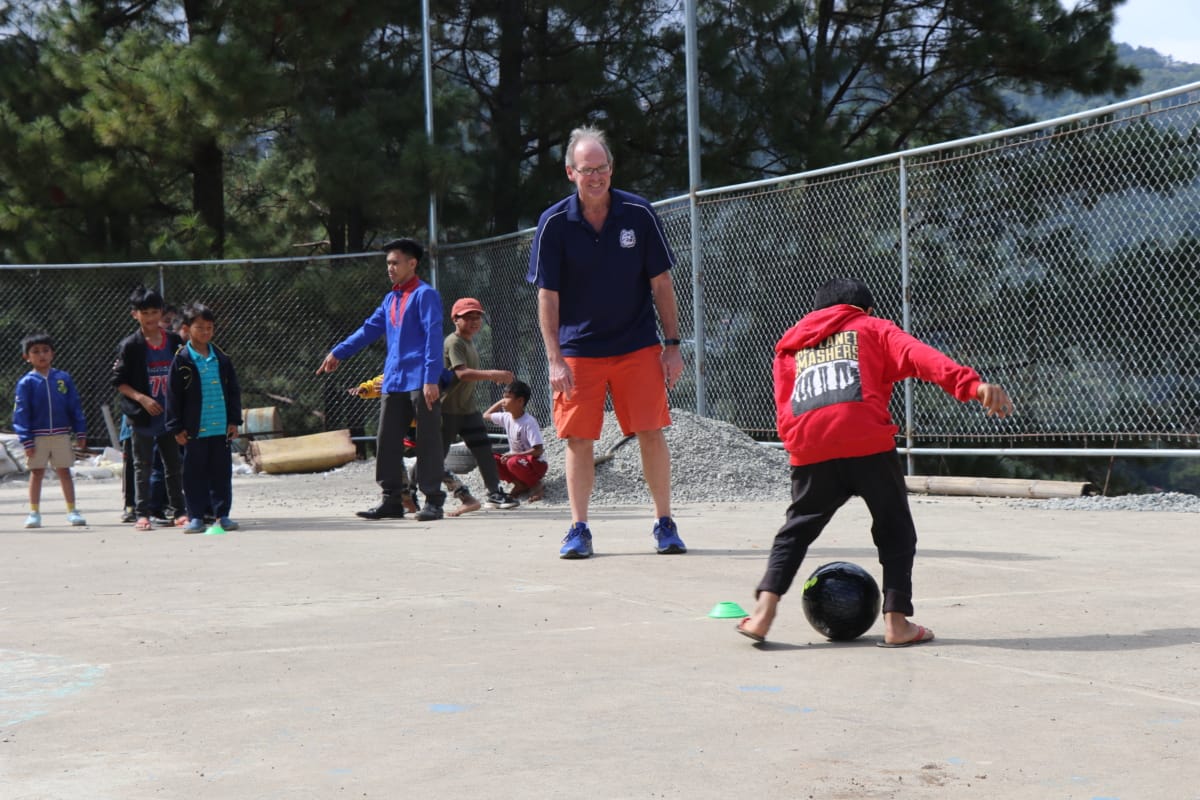
“Cge na (okay now)!” I called out from the microphone “Kailangin ko 8 groups of 6, so please group up na with your best friends if they’re here!” I yelled.
The thought of six kids huddled around one little ball had me sweating, but I trusted that the kids would find a way to enjoy themselves regardless. Despite that, I still feared the chance of them butting heads when bending to the ground to snatch the ball before their teammates could. Luckily, those fears only existed in my head, as yes the competition was fierce, but tame and respectful just the same. I had learned my lesson from Bahay Maria’s program and spent the night before planning for the day’s listening drill.
In my camera roll, a screenshot of a list filled with body parts and their Tagalog equivalents. I ran a couple rounds myself, hitting the usual crowd favorites like “Kili Kili” and “Ulo ni partners mo” with participants excitedly following the commands just as soon as they hit their ears. Ready to pass responsibility along to another, I asked the group to designate a captain with an older girl, Annie, taking the lead. This came as no surprise as she was one of the head figures in the girls’ choreographed dance. I handed her the mic though and she wasn’t feeling quite up for the moment, which was totally cool.
Instead, an even older girl, aptly named Princess, volunteered her service and ran a quick round herself as I slipped a yellow captain’s band over her long sleeve shirt and around her arm. Mindful of our short amount of time together, and blessed to already have our grid put together, I decided to break into relay races with four teams of 10+ participants. We kicked things off with some zig zag runs, dribbling, jumping, and more. Sometimes the kids would request for a trial run, which I gladly honored just so we were all on the same page. I looked on with joy as the kids smiled while weaving in and out of the cones, joy that only grew as I looked further beyond the participants’ eyes to see their teammates waiting behind them, shouting happily and cheering loudly.
From there, I enlisted the help of my uncle, Tito Bobi to hit a few rounds of Ulo o Kamay – and I won’t lie, I think the man was enjoying the game even more than the kids! Tito Bobi helped me out with a program back in 2016 too, so this was all a treat for me, just as it was a walk down memory lane. I ran a round, as he simultaneously ran another – the two circles composed of 25+ participants each.
We decided to give our prizes to the last three players remaining, leaving us with 6 winners after our initial two rounds. For round two, six winners would be had yet again, though I pulled myself out of the circle to let Princess run the drill herself. Meanwhile, I sat and admired the joy radiating from my uncle as he laughed deeper and deeper with each passing command to the kids.
*Tweeeet* I blew my whistle as both circles came to a close and we had 12 winners total now. I went into my bag just to double check the count – “Wait, I have 16 bags, we can pick 4 more winners!” I exclaimed.
“Ok guys, I need one really long line,” I said, with the kids standing in a lengthy straight line nearly 50 deep. Having seen some variations of this game and needing a quick fix to select winners, I set up one cone at the front of the line with a ball sat atop it. Then, I laid the four prize bags down on the pavement in front of the ball/cone combo. One to the right, another to the left – one further back, another a little closer. The wind was blowing, so I placed a rock on each bag to prevent them from flying away.
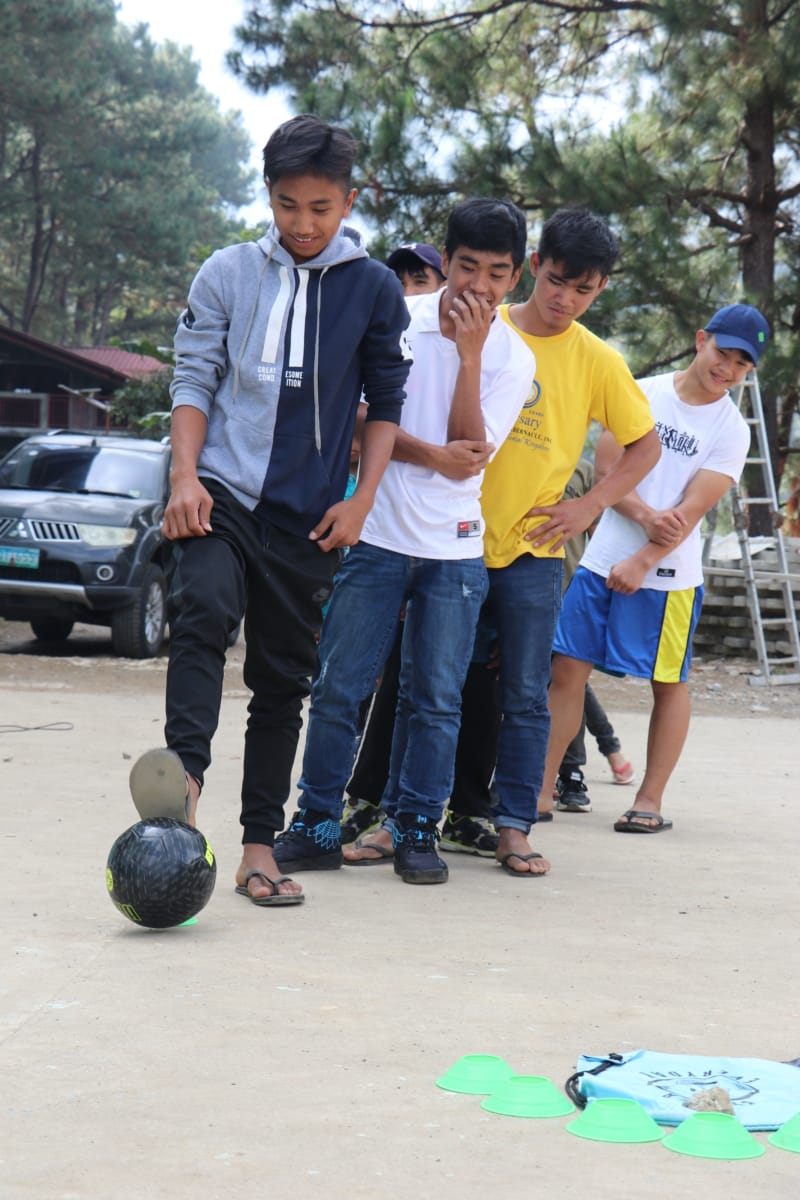
The rules were simple – a push pass from behind the cone – if the ball stopped on top of a bag, it was yours to keep! Easy enough, right? I hit a trial run to give the kids an example and sighed in agony as my ball painfully rolled onto one bag and trickled past the back of it. Nearly 10-15 kids in, I realized this might not be as easy as originally designed. You see, some kids got the distance right, others the aim, and others the accuracy, but even if all three were accounted for, this game was hardly forgiving. I saw plenty of balls resting atop a bag for mere seconds before rolling back off of them, despite myself thinking they were sure-fire winners.
“Ang malapit naman (how close)!” I’d yell out, secretly hoping one of them would just stop right on top of the bag. “A fix!” I thought to myself.
I took the remaining cones and made little boundaries around each bag, that way, as long as a kicker slotted one into the pocket around a bag surely they would be taking it home. Five kicks later, we had a winner! Five kicks after that, another one! Now we were really moving.
I’d seen this game played with a ladder, where each rung corresponded to different prizes like a jersey, water bottle, ball, etc. but this was definitely a good alternative especially when thought of on such short notice. I’d be happy to continue implementing it into future sessions too. With our 16 winners finally put together, I decided to leave the eight Puma balls with Bethesda to utilize during free play time.
We called out the winners, greeting the group of them with applause as they approached to pick out whatever bags they were feeling. Then, the rest of the group received an assortment of bracelets while participants left with a bag of cookies and a juice box – a well-deserved snack after an hour of physical activity. We sat down on those same familiar blue bleachers for a group picture, followed by one of just our prize winners.
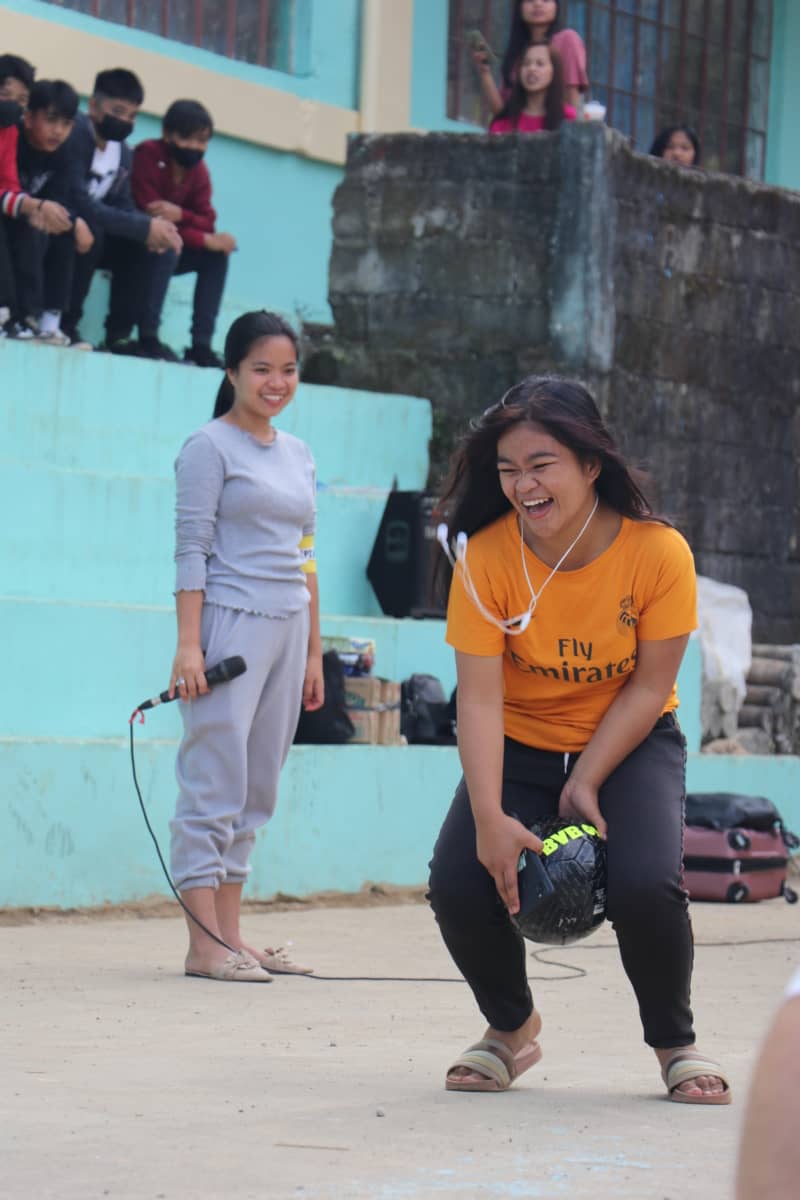
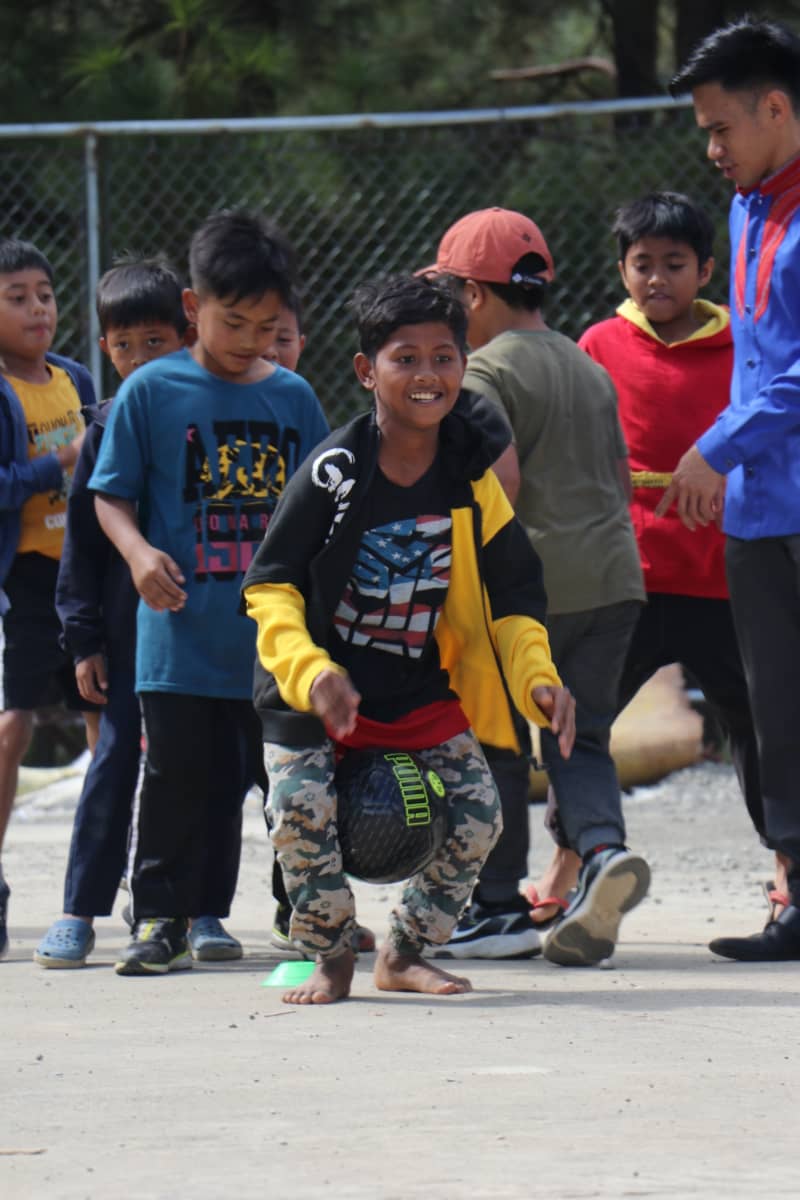
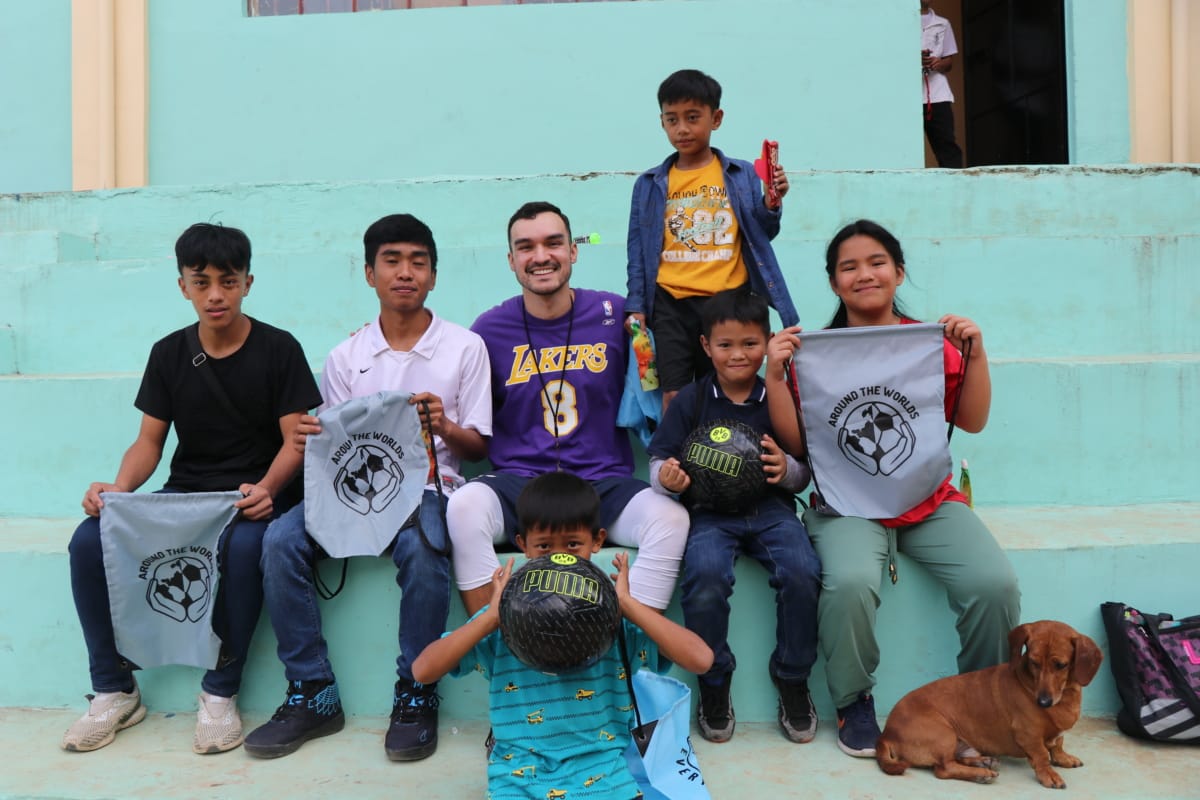
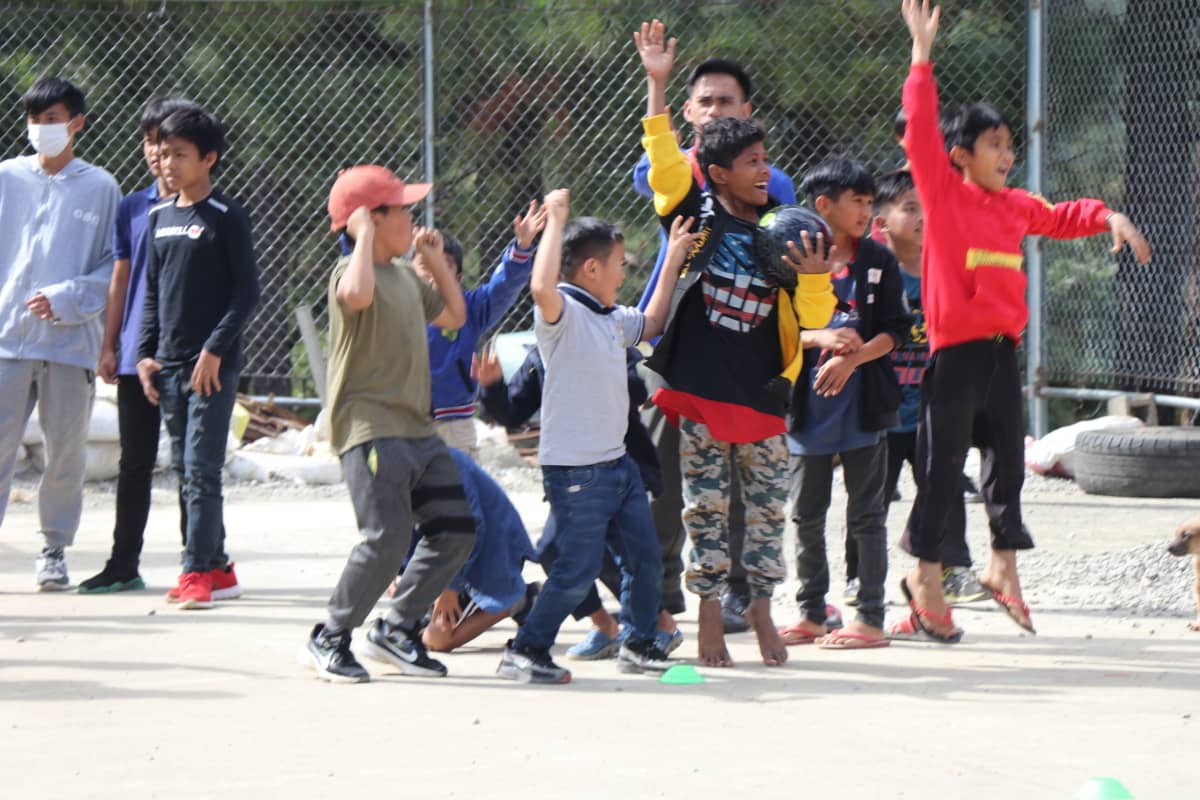

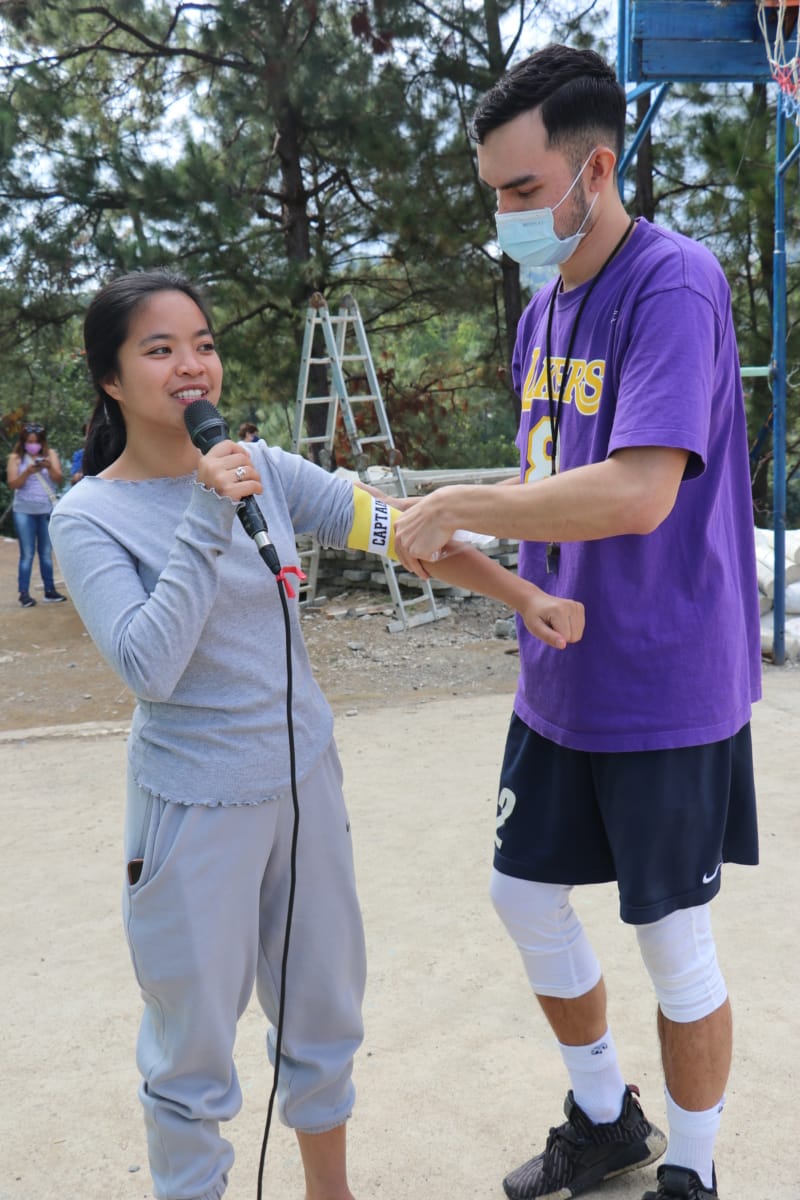
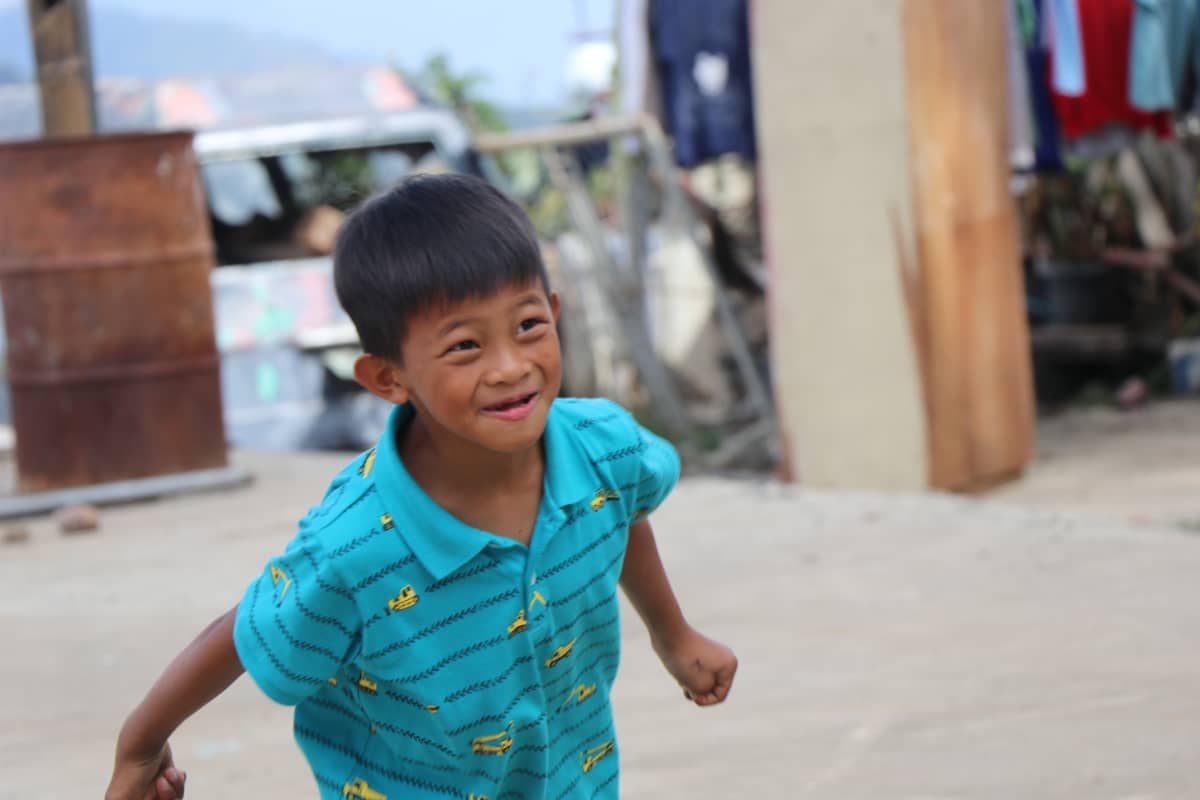
Moments later, a little boy tapped me on the shoulder, “Excuse me coach, did you do a picture with the prize winners yet?” he asked, softly, afraid that he had missed out on the moment.
“Ang swerte naman tol!” (How lucky you are bro!)” I said. “Just the two of us,” I added, as we snapped a photo together.
A couple of the older girls asked for photos, and after the last one was taken we began the long, steep trek back up to the car. Passing by dormitories and participants, they offered words of thanks and high fives. A young girl even asked if I’d humor her for a secret handshake – left, then right, and a fist bump, topped off with a tap of the chest and a peace sign.
Moments later, we reached the top of the hill. At the top, a half-rebuilt church – a reminder of a tragedy seven years removed. Down below, there was a group of kids bursting with happiness and emanating with joy. A group of kids who would without hesitance share that joy with the one next to them or the stranger in front of them. Seven years ago, those lyrics sang that joy was coming, and certainly in that 2016 program it really felt like joy was on its way. Now, joy had arrived, and that same joy was very much alive, to this day and beyond.
